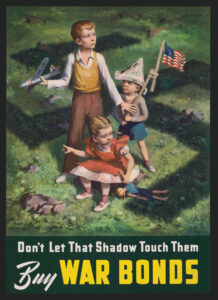Armed women took to the streets to protest against Confederate injustice.
On the morning of March 18, 1863, about 20 women, headed by a tall woman with a determined look, began moving through the downtown streets of Atlanta. They stopped in front of a store, and the tall woman queried the merchant pointedly about the price of bacon. Told it was $1.10 a pound, she protested the “impossibility of females in their condition” paying such a price for meat on Confederate soldiers’ wages. When the merchant refused to lower the price, she drew a long Navy revolver from her breast. Holding the owner at bay, she ordered the mob of women to help themselves. When they were done, the group departed, stopping long enough to explain to onlookers why they had behaved so. Their families, they said, had “been deprived of anything to eat…save a small portion of corn bread.” It was “their suffering condition,” they said, that drove them to act.
The Atlanta uprising was the first in a wave of violent food riots that swept through the Confederacy from Mobile to Richmond. The need to provision troops had disrupted the food supply, and with most of their husbands or sons away at war, rural women could no longer produce enough food to feed their families on the South’s small farms. Throughout the South, poor women faced soaring prices and shortages. Beginning in March 1863, hundreds of them took to the streets in armed confrontations that shocked a nation. Lacking the tools of the ballot box, or in some cases even literacy, these women organized to get what they needed. The riots prompted an outpouring of support, ranging from a welfare system for soldiers’ wives established by the state legislatures to appeals for planters to grow more food and less cotton. And the criminal investigations the riots set in motion established beyond a doubt the political agency of the women themselves. The acts were conceived and organized not by “Northern agitators,” as some suggested, but by determined Confederate wives and mothers.
What happened in Atlanta on March 18 seemed to ignite a chain reaction. In Salisbury, N.C., just one day later, another mob, this time numbering 40 to 50 women armed with hatchets and backed by a crowd of men, mounted attacks on about seven stores. The women, self-described as “respectable poor women…all Soldiers’ wives or Mothers,” targeted merchants they regarded as speculators. One storekeeper, Michael Brown, described how they demanded cheap flour, and when he refused, they broke down the door with hatchets and forced their way in. The women left, he said, only after he bought them off with 10 free barrels of flour. The group moved on to wreak the same havoc at other stores, getting more flour as well as molasses, salt and $20 in cash.
The riots were spectacular and numerous. Mobs of women numbering from a dozen to 300 and more, armed with Navy revolvers, pistols, repeaters, bowie knives and hatchets, carried out at least 12 violent attacks (there are rumors of more) on stores, government warehouses, army convoys, railroad depots, salt works and granaries. The attacks occurred in broad daylight, and they were all carried out in the space of one month, between the middle of March and the middle of April 1863. It was truly a Confederate spring of soldiers’ wives’ discontent.
On April 2, in the biggest street action of all, women in Richmond notoriously shouted “Bread or Blood.” Their trademark cry had already appeared in threatening letters that North Carolina women sent to their governor, and on the banners that Mobile’s army of women (as one participant described them) waved in their rough procession through city streets on March 25. “Bread or Blood,” was emblazoned on one side, “Bread or Peace” on the other. The women meant business.
The food riots appeared to be highly organized, premeditated and disciplined affairs. The women had a designated leader, were prepared to take violent action and managed public opinion by calculated appeals to the public conscience concerning the needs of soldiers’ wives and daughters.
Among them was an appeal by Mary Moore, a member (and perhaps the leader) of the mob in Salisbury to North Carolina’s governor, Zebulon Vance. Speaking on behalf of the rioters, she urged him for “protection and a remedy of these evils.”
“We Governor are all soldiers’ wives or mothers,” she told him, “our Husbands and Sons are now separated from us by the cruel war not only to defend their humbly homes but the homes and property of the rich man.” She admitted that they had stolen flour and money at gunpoint but cast the riot as the seizure only of what was rightly owed to the people, whose claims it had fallen to them, the women, to enforce. “Now Sir, this is all we have done,” she finished.
More matter-of-fact than defiant, Moore’s defense of the Salisbury’s mob action certainly reflected her view— one shared by the legions of soldiers’ wives who had already submitted petitions to government officials—of what the government owed the wives in exchange for the sacrifice of their men. In that sense, the women’s demands confidently tapped a sense of entitlement that was new and historic for poor white women, but which was already deeply embedded within popular political culture in the Confederacy. What was owed to soldiers’ wives? Few in the Confederacy could argue with the women’s demands.
The string of protests in various cities, apparently locally organized yet so closely spaced and similar in pattern, provoked wild speculation. By the time the wave of 1863 springtime riots crested in Richmond, conspiracy theories abounded. “That they are the emissaries of the Federal Government it is…difficult to doubt,” the Richmond Daily Examiner ventured. Such seemingly connected and highly organized events were beyond the capacity of mere women. This had to be the work of men, professionals, probably Yankee operatives.
Yet when Richmond officials decided to prosecute the rioters, the Confederate public came to learn firsthand of the leadership, recruitment, preparations and collective discipline that culminated in the uprisings on April 2. In other riots there are suggestions of prior organization— the way women just materialized “in a body” at a particular, apparently predesignated time and place with banners, slogans and speeches at the ready. But in Richmond there is no question. The sheer numbers—an estimated 300 women followed by a crowd that amounted to more than 1,000—defied any possibility of spontaneous eruption, and the evidence that emerged at trial confirmed it.
The court testimony, though shocking to many, was indisputable: The Richmond riot had been in the works for at least 10 days. Moreover, despite widespread speculation that men were the instigators, it was, in fact, the work of one Mary Jackson, soldiers’ mother, farm wife and huckster in meat in Richmond’s Second Market. She and about 300 women had planned and pulled off the biggest civilian riot in Confederate history.
Recruiting apparently began around March 22, when Jackson organized “a meeting of the women in relation to the high prices.” Jackson’s networks drew from her rural connections as well as her city contacts, and she worked them all. Witnesses reported a stream of women coming in from surrounding counties on the day before the riot, at least one from a distance of 11 miles. More than 300 women showed up on April 1 for the meeting in the Belvidere Baptist Church on Oregon Hill, where the riot was planned. “All were women there except two boys,” one witness, a Mrs. Jamison, explained. “The object of the meeting was to organize to demand goods of the merchants at government prices and if they were not given the stores were to be broken open and the goods taken by force.” By all accounts, the meeting was rowdy, yet Jackson was clearly in command. In a stunning assumption of male authority, she “went up into the pulpit” to address the meeting and issue instructions about how the demonstration was to proceed. She said “she didn’t want the women to go along the streets like a parcel of heathens,” one woman testified later, “but to go quietly to the stores and demand goods at government prices.” If the merchants refused, the protestors were “to break open the stores and take the goods.” Jackson told them to meet the next morning at 9 a.m., to leave their children at home and to come armed.
Unusual and violent as the riot was, Jackson and the women who planned it were no different in their political beliefs than most Confederate wives. Many thought and said the same things—although usually in letters to government officials begging for support or for the release of their men from the Army. Indeed after 1862, governors’ mailboxes brimmed with letters from poor white soldiers’ wives. Some simply pleaded for the release of their husbands from the Army. Others threatened to use violence if there was not more equity in the government’s recruitment policies. The women protested that affluent men from households with more than 20 slaves could apply for exemption from the draft while poor men could not. Governor Vance of North Carolina had received one such letter just weeks before the Salisbury riot. “The time has come that we the common people has to hav bread or blood and we are bound boath men and women to hav it or die in the attempt,” read that anonymous threat from a “company” of women (their term) in Bladen County who called themselves “Reglators.” They would have corn at $2 per bushel or they would seize it.
Most women never crossed the line from threats to violent direct action in the streets. Indeed, before Mary Jack son took to the streets, she had been one who pursued her goals through ordinary, peaceful petitions. John B. Jones, a clerk in the War Department, remembered her from her “frequent application at the war office for the discharge of her son.” Her strategy for the riot confirms how she regarded the action as a culmination of a process of protest. By insisting that the rioters first make an offer to pay government price for the goods they planned to seize—and in first seeking an audience with the governor before taking to the streets—she and the others showed their deep investment in the ideas and practices of Southern white women’s new wartime political culture. The women had guns, but like the mobs in Atlanta and Salisbury they also had a public relations strategy.
Still, in Richmond as elsewhere, violence was planned for from the beginning. Jackson was seen with a bowie knife and six-barreled pistol as she left the market on the morning of the riot. When the mob surged out of the western gates of Capitol Square up onto Ninth Street, they marched silently as Jackson had instructed, but the women were heavily armed with domestic implements and the contents of an old armory: axes and hatchets, “rusty old horse pistols, clubs, knives, bayonets stuffed in belts, and specimens of the home made knives with which our soliders were wont to load themselves down in the first part of the war,” as one witness put it. For a good two hours they wreaked havoc on the streets of Richmond, targeting known speculators, smashing their way into stores with hatchets and axes, looting at gunpoint and loading stolen goods onto wagons they impressed on the street.
Many of the women eventually arrested were caught as they were driving off their haul, or were found with the stolen goods in working-class neighborhoods and farms in and around the city. At least 12 stores were looted before the public guard was called out and managed to restore order by threatening to fire on the rioters. Those caught in the subsequent dragnet included participants like Mary Duke, a soldier’s wife, left at home with four children while her husband served in Robert E. Lee’s army, who was seen brandishing a revolver. But the authorities also got the ringleaders, including Jackson. She was picked up around noontime in a mob of women trying to break into another store, still unbowed, brandishing a bowie knife, shouting, yes, “bread or blood.”
There would be at least six other riots in 1863, and as in Atlanta, Salisbury and Richmond, they played out in violent form the politics of subsistence that the soldiers’ wives had forged in their brutal experience on the Confederate home front. In all the riots, the women’s anger focused on government officials as much as merchants and planters. They protested the inadequacy of welfare support from the Confederacy as well as speculation by the commercial class, which hiked prices sky-high when supplies were short.
A public recognition of the inadequacy of welfare proved to be one of the critical consequences of the women’s riots. Only two days after the riot in Richmond, the mayor formed a citywide committee to investigate the needs of soldiers’ dependents, and by April 9 they had appropriated “$20,000 for the relief of the families of soldiers.” Throughout the Confederacy, local, state and even federal officials undertook a systematic reform and massive extension of the welfare and relief system.
“The great question in this revolution is now a question of bread,” Governor Joseph Brown of Georgia declared during a special session of the state legislature called nine days after the Atlanta riot. Georgia and at least six other Confederate states would go on to build welfare systems bigger in budget and staff than any before in the history of the United States, including the Union states during the war.
Georgia alone spent as much in one year as Massachusetts did during the whole war. Make no mistake. This was not a reflection (as one historian put it) of Governor Brown’s “overriding concern for the little man.” No, the extension of state welfare was, more precisely and more interestingly, a direct political response to the mobilization of poor white and yeoman women—poor white soldiers’ wives—in Georgia and other states of the Confederacy. As in North Carolina, where the new law of 1863 was titled an “Act for the Relief of the Wives and Families of Soldiers in the Army,” and where millers received instructions to distribute subsidized government corn “first to soldiers’ wives” and only then “to other needy persons,” the new Confederate welfare systems were built, quite literally, in the image of the soldiers’ wives.
In the end, the women rioters proved beyond the shadow of a doubt that any government that took their men would ultimately have to answer to them.
Stephanie McCurry, who teaches at the University of Pennsylvania, is the author of Confederate Reckoning: Power and Politics in the Civil War South (2010).
Originally published in the June 2011 issue of Civil War Times. To subscribe, click here.




